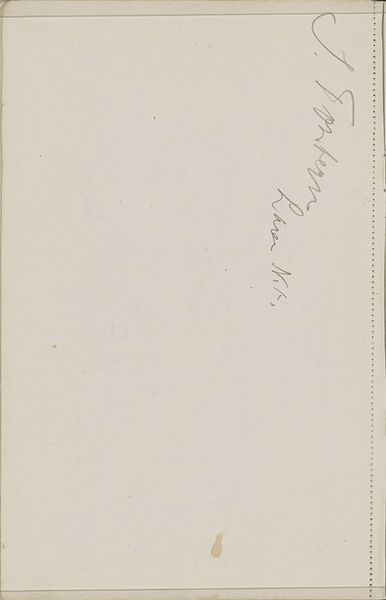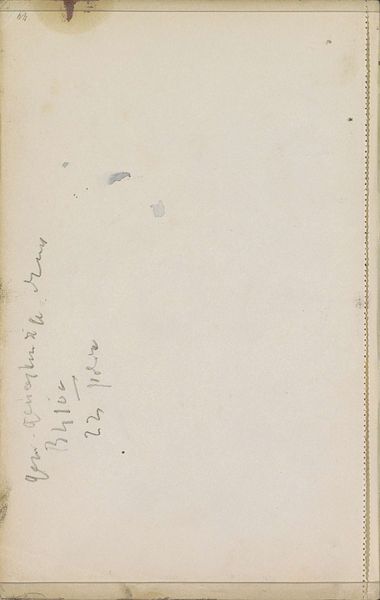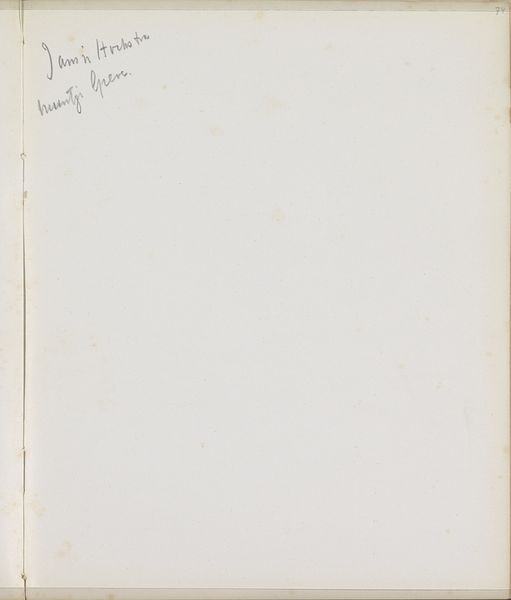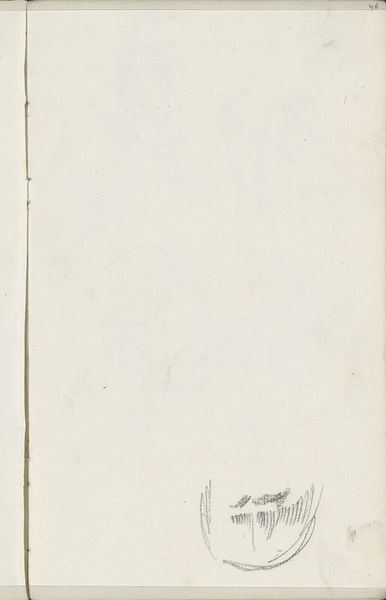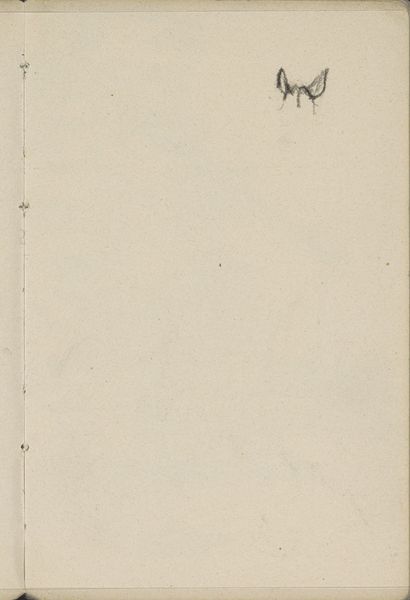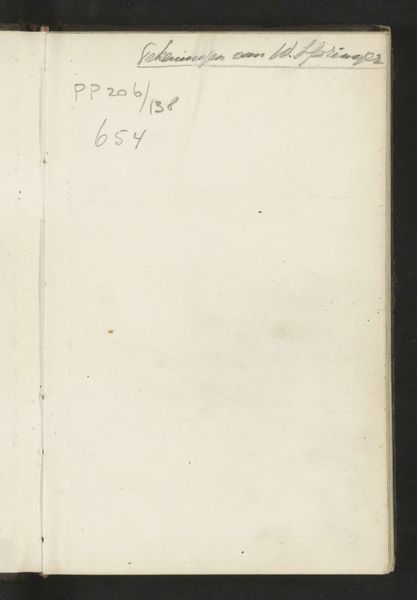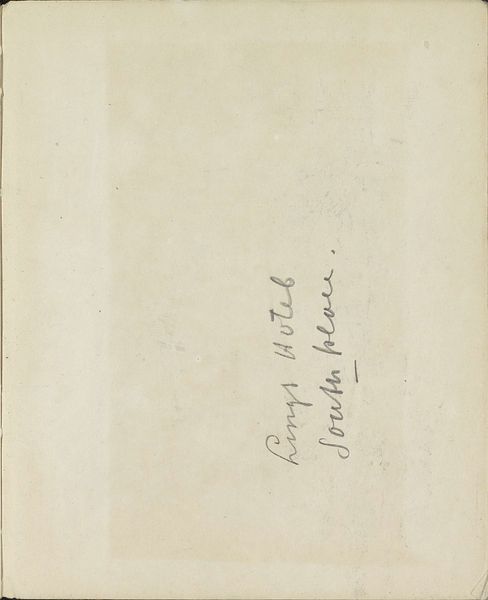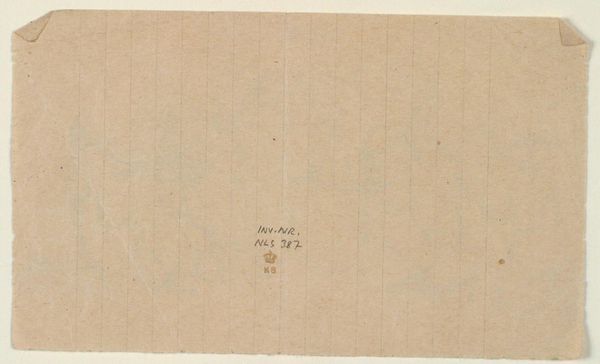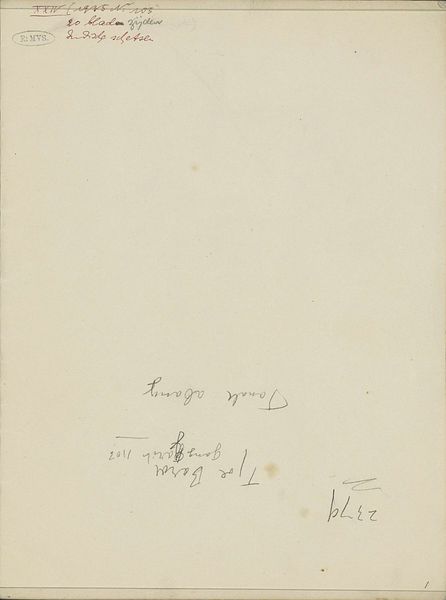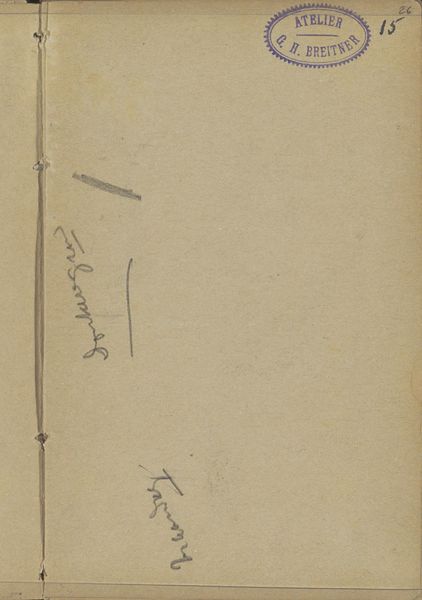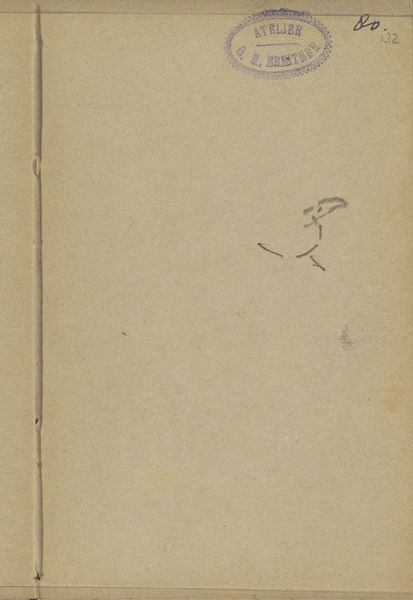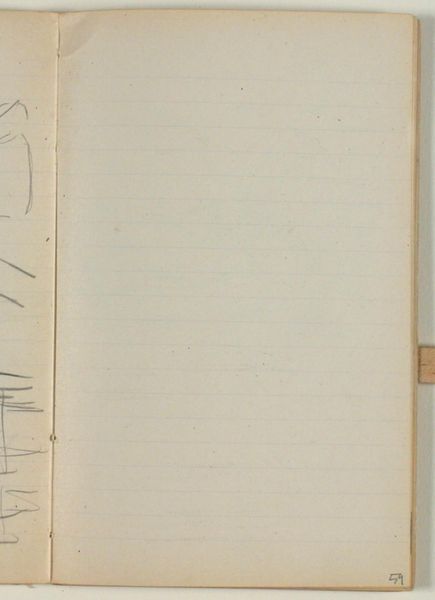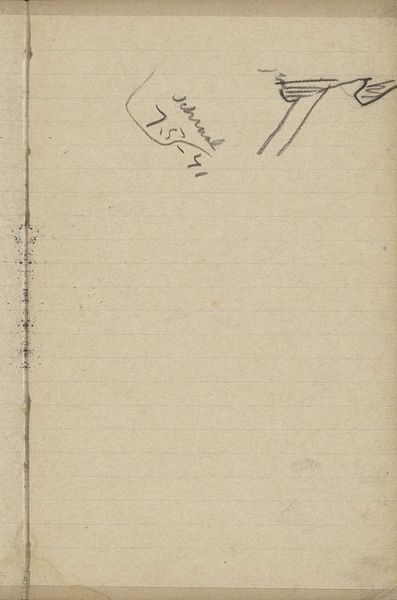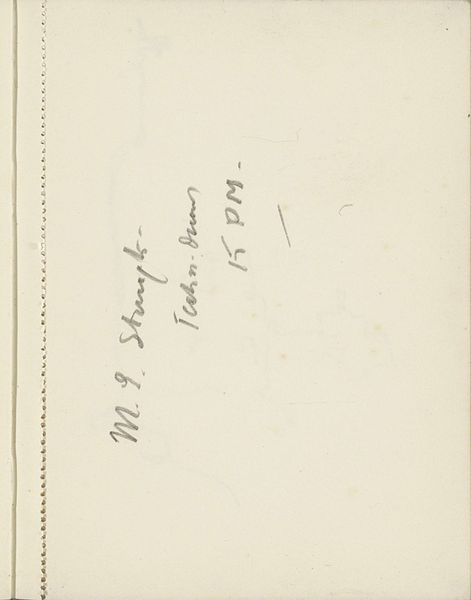
drawing, paper, ink
#
portrait
#
drawing
#
paper
#
ink
#
academic-art
Copyright: Rijks Museum: Open Domain
Editor: This is "Annotatie," a work in ink on paper by George Hendrik Breitner, created between 1880 and 1882. It looks like a page torn from a notebook. What strikes me is its apparent emptiness. It looks unfinished or maybe unimportant. What do you make of it? Curator: That feeling of emptiness, or perhaps 'potential,' is a good starting point. Consider the historical context: the late 19th century saw burgeoning social change, fueled by industrialization and the questioning of traditional power structures. Even the most mundane artifact can illuminate prevailing ideologies. What do you notice about the writing itself? Editor: It looks like maybe practice handwriting? Or just a quick note taken for later use. I guess it seems like nothing special in that sense. Curator: Exactly. But let's look closer. This 'nothing special,' this 'annotation,' grants us access into the artist's process. It begs the questions: what was Breitner thinking and feeling at the time of writing this down? Whose name is being recorded here? What value systems were shaping the perception of value of certain individuals and/or texts? And further, does this 'notation' hint at the broader socio-political structures of that time, especially about those whose stories may have gone unrecorded? Editor: So you are saying, even an overlooked sketch can expose some historical elements? I suppose looking at all things, no matter how ordinary, can give some glimpse into a long lost, perhaps, untold perspective. Curator: Precisely! Breitner's simple annotations can provoke important questions about social constructs, what stories get told, and who gets remembered by whom. And, maybe even the unglamorous labor behind greatness. Editor: That's given me a lot to consider! Thanks.
Comments
No comments
Be the first to comment and join the conversation on the ultimate creative platform.
